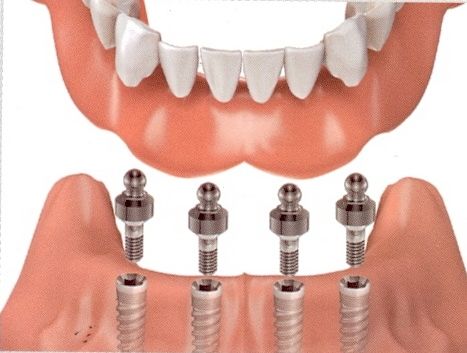
Total dentures are recommended when there are no teeth left, but today, dental implants allow for a fixed prosthesis that does not require periodic removal and provides increased patient comfort. This special type of implant-supported denture is called an overdenture. In this case, overdentures reduce the life expectancy of dental implants.
Stabilisation of dentures using dental implants is a technique with spectacular results and is becoming increasingly widespread. Immediately after the dental implant insertion procedure, the dentures you already have are adjusted to the two to four implants for maximum functionality during the healing period.
After a few months of healing until the bone is welded around the implant, the denture solution supported on the desired dental implant can be chosen.
Implant prosthesis variants
| Type of prosthesis | Mobility | Implants needed | Clamping system |
|---|---|---|---|
| Fixed prosthesis | The prosthesis is permanently attached to the existing implants. Only the dentist can remove the dentures. | The number of implants differs from case to case. | The prosthesis is provided with a set of holes corresponding to the implant heads. These holes are intended for the insertion of the fixing screws and are to be plugged after the prosthesis is attached to the implants. |
| Mobile prosthesis | Although the prosthesis is very firmly supported on the existing implants, the patient can remove it (e.g. for cleaning). | The implants are attached to a frame (a bar) that is to support the prosthesis. | The prosthesis will be attached to the implants by a click or snap system. |
| Stabilisation of the prosthesis | The patient can easily remove the prosthesis. | A small number of dental implants (e.g. two) is required. | The denture is supported by the gum and implant posts. |
 RO
RO  EN
EN 